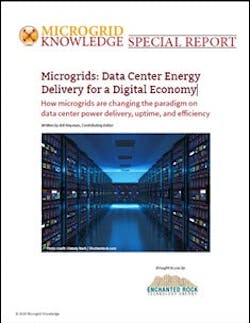The data center industry continues to meet society’s increased demand for constant connectivity, content delivery, and a myriad of business and personal necessities. As the data center industry expands, whether in traditional facilities or at the edge, data center leaders seek ways to deploy better, more resilient mission-critical operations, including power systems. Meanwhile, severe weather events, cybersecurity threats, and aging equipment strain the electric grid. This is why data center microgrids are growing in popularity.
Uptime and performance are critical for data centers, but they can not continue to rely on diesel generators for reliable backup power, especially as they respond to price pressure and environmental sensibilities. The answer? Microgrids. Unlike traditional diesel backup generators, they offer data center and colocation operators a resiliency solution that reduces emissions, increases availability, and provides economic advantages that diesel cannot.
In this special report, Microgrid Knowledge teams up with Data Center Frontier editor Bill Kleyman and explores why microgrids for data centers are on the rise. You’ll learn how microgrids improve resiliency, uptime, and a data center’s environmental profile. It explains their economic value and the different purchasing models that can adapt to your facility’s needs. The report demonstrates how microgrids fundamentally change power delivery for primary and even edge users, and takes a look at real-world examples of microgrids in action. In an environment when downtime is not an option, microgrids are a proven technology that allow data centers to adapt to the changing landscape of our new digital reality.
